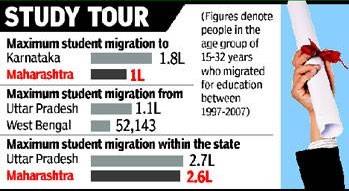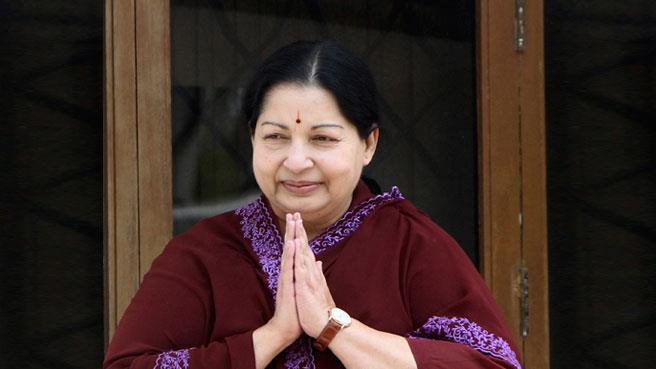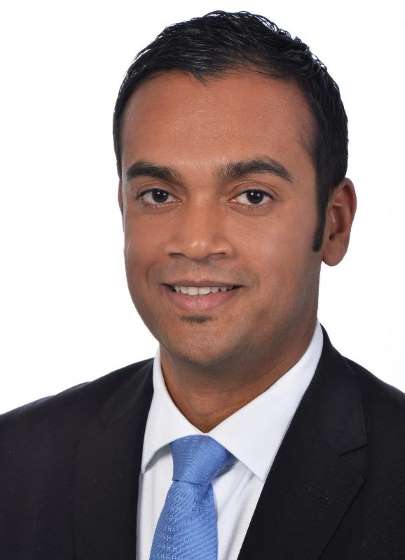February 1, 2014
MUMBAI: The flight to campus is not always beyond the seas. The comfort of being close to home is driving several young Indians to different Indian states to pursue an education.

In the last 10 years, a total of 37 lakh moved to get a degree, showing that a discouraging academic landscape near home is no longer keeping its youth from travelling to the brighter lights elsewhere.
February 1, 2014
MUMBAI: The flight to campus is not always beyond the seas. The comfort of being close to home is driving several young Indians to different Indian states to pursue an education.

In the last 10 years, a total of 37 lakh moved to get a degree, showing that a discouraging academic landscape near home is no longer keeping its youth from travelling to the brighter lights elsewhere.
Departure rate among young men wanting to pursue an education is higher, for 26 lakh shifted as compared to 11 lakh women. Of those, 6.2 lakh youths (or 17%) moved to a new state; 16.8 lakh shifted to another district within their home state in the last 10 years. Karnataka received the largest exodus — 1.8 lakh — from other states and Uttar Pradesh sent out most students — 1.1 lakh.
A January 2014 research paper, Internal Migration for Education and Employment among Youth in India, commissioned by UN-HABITAT's Global Urban Youth Research Network, begins a conversation on whether Indian states must worry about internal brain drain.

"Migration is an old story. But the most important phenomenon we are seeing today is people moving for education," said author S Chandrasekhar, professor at the Indira Gandhi Institute of Development Research. "With uneven distribution of educational facilities, there are clearly going to be winner states and loser states. My paper maps the trends of migration and also leaves you with a question: Should we worry of the brain drain at the sub-national level?"
However, the survey charts merely those who migrated for the motive of education. "For example, if a family moved to Delhi because the bread-earner got a new job and the child joined a Delhi college, he or she is not included in this survey," clarified Chandrasekhar.
Historically, as is the story even now, of the 11 crore individuals aged 15-32 years, over 70% moved on account of matrimony. While nearly 10% shifted in search of employment, over 3.5% did so on account of education.
"The share of educational migration has increased. As far as I can see, for education, more migration happens from AP to Karnataka, UP to Delhi and from UP to Maharashtra," said Anil Kumar, professor at the Tata Institute of Social Sciences. Looking back, Chandrasekhar said, most people in the 80s moved not for education, but for jobs and career opportunities.
"There wasn't a Noida then, nor were the large private universities. The new IITs and IIMs were not yet up. Only recently did so many new AICTE-approved technical colleges come up," he explained. So, expansion of higher education has only fuelled migration.
"The most important states from the perspective of migration for education are Delhi, Maharashtra, Karnataka, Uttar Pradesh, Bihar, Andhra Pradesh, Kerala, West Bengal and Rajasthan. Of these states, Delhi, Maharashtra, Karnataka are the main destinations (i.e. attracting migrants from other states), whereas Bihar, Uttar Pradesh, Kerala, Andhra Pradesh, West Bengal and Rajasthan are the main source states of migrants," the paper noted.
But the winds are changing. "In the next five years, we will see the Haryana effect where new universities are coming up; that will give migration a new meaning. Will states shall attract students also provide enough jobs?" asked Chandrasekhar.
Courtesy: TNN







































































































